Academy Award-winning Sound Designer of "Hugo" Eugene Gearty Talks Sound in Film
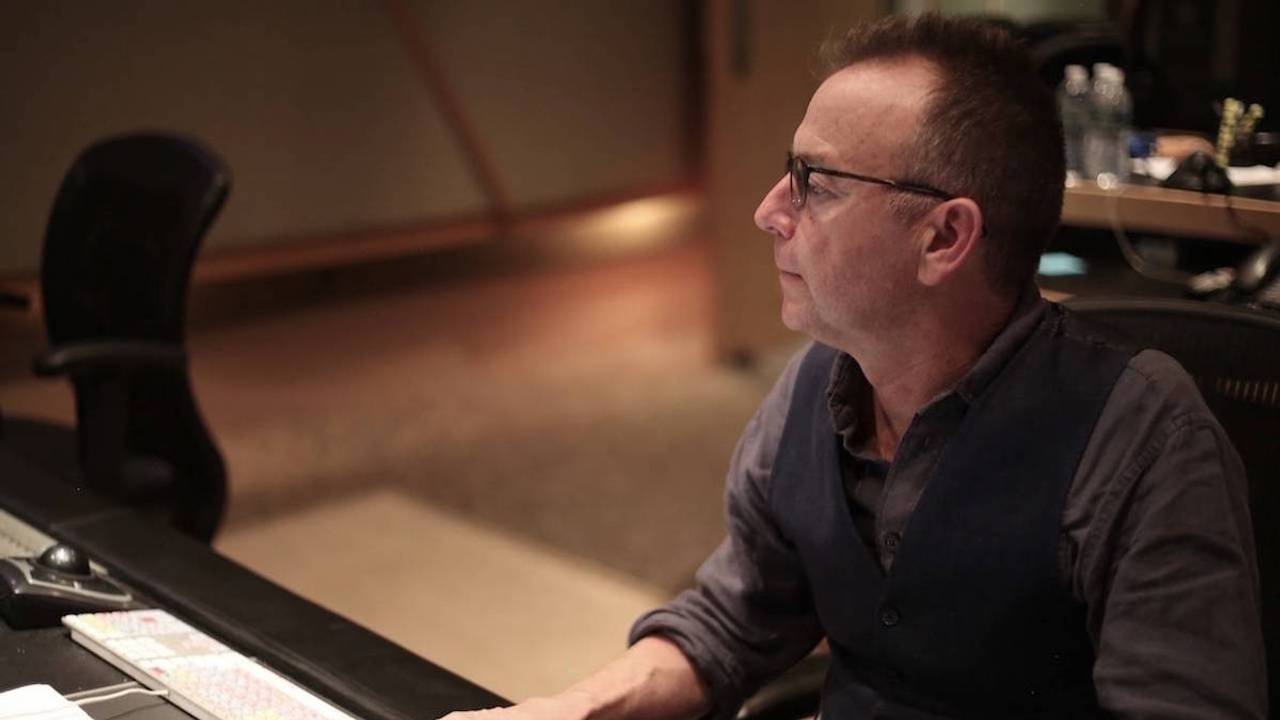
Oscar-winning sound designer Eugene Gearty, joined Filmmaker U to discuss staying focused during the COVID-19 pandemic, getting the job you want, and to answer our questions about the world of Sound in film. If you want to learn more directly from Eugene on his processes, his insights and his vast amount of experiences; check out our online class with Eugene here.
Starting in 1982 Eugene Gearty was one of the first digital Sound Editor/Designers in the film industry. He pioneered the use of the access and the Synclavier systems for use in creating and editing sound effects for movies such as "Silence of the Lambs," "Do The Right Thing," "Men in Black," and "The Hudsucker Proxy." He has worked with many New York directors including Joel & Ethan Coen, Jim Jaramusch and Lee Daniels. He has been nominated for an Academy Award 3 times and won an Oscar for "Hugo." He has won the Golden Lion (Taiwan) and the Hong Kong “Oscar"(China) for "Crouching Tiger/Hidden Dragon." He has also won the MPSE golden reel for Sound Effects editing for "The Aviator." His Television credits include Boardwalk Empire for which he received an Emmy for his work on the Martin Scorsese directed pilot. After being nominated for an Oscar in 2013 for his work on Ang Lee’s "Life of Pi," he has since worked on Scorsese's "The Wolf of Wall Street" "Silence," and "The Irishman." Other recent work includes "Gemini Man," "Mary Poppins Returns," and "The Nutcracker." He has also helped develop the Savannah College of Art and Design on expanding their Sound Design program.
Gordon Burkell (GB) - Hi everyone, it's Gordon Burkell here from Filmmaker U! At filmmaker.com, we create courses for film professionals to deepen and diversify their existing skill set. Today, we're talking to Eugene Gearty, who has worked on some of the best films of the last 30 or 40 years. So before we open things up, I guess, give us a sense of what's going on on your end, in terms of sound and what's happening with COVID-19.
Eugene Gearty (EG) - For me it's been a little rough schedule wise, although I am very fortunate to be working, helping Terry Malick on his next film, and it's truly an honor to to work with one of my film director idols that I just, you know, think is a true artist working. I can't talk too much about the project, but I've been helping them with their rough cut. It's just sounds so they can help them edit the picture. It's not necessarily going to be in the final, but it's like temp music in a way.
GB - What's your go to hobby to relax?
EG - We're in a community where we can walk the dog. I go up to the driving range and hit golf balls and play rounds of golf in the late afternoon. That's sort of my go to hobby because I'm kind of naturally addicted to that. That type of golf is like, compulsive, short of that that, fly fishing for sure! Out back I'm on my boat as much as possible.
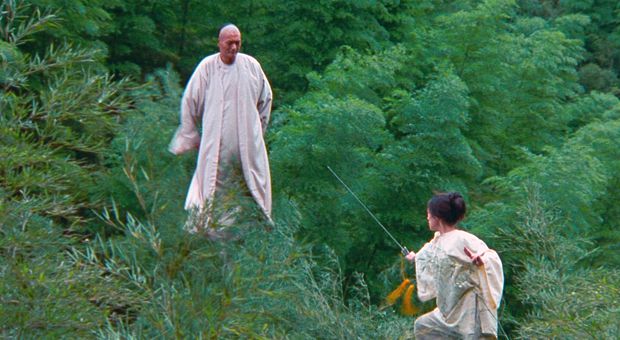
GB - Now, you've worked on so many projects that are iconic, but can you tell me what scene has challenged you most in your career? The one you're most most proud of?
EG - I would say a scene from "Crouching Tiger, Hidden Dragon". The scene in the bamboo forest towards the end of the film when they have their sword fight. In our approach to it, the sounds found us. I think because, you know, looking back in retrospect, I'm not that smart. And yet with that movie, wonderful things happened. So that's always catching me off guard. There's something about that movie that was so innocent. Ang's career and my career were just starting up in a big way and it was wonderful. The entire film itself was quite demanding and challenging. But coming up with the green destiny, I think, was the most challenging. And at the same time, the easiest.
GB - When you and I chatted during the course that we created for Filmmaker U, we discussed a bit about surround sound design. Do you go about developing your own sounds for surround sound? And how do you not only mic but how do you figure out what sounds work best in which channel?
EG - I don't own a multi channel mic or rig personally, but whenever there's an opportunity to record multi channel, obviously, that's a good start. I personally don't like handling 5.1 or 7.1 files in Pro Tools using Spanner as a way to to change things. I guess starting out when 5.1 was really a big deal. Anything discrete was a quantum leap forward for sound designers from the original Dolby format. Multi-track recordings weren't really the thing to do back then. Even though I had friends that would set up two DAT machines two space pairs and do quad recordings. I always found it to be an opportunity to create the atmosphere with multiple mono elements and sometimes stereo elements. In a way the perfect 5.1 experience is really a sweet spot in that theater, during the mix stage; to get whatever spaciality of a single source recording. For example of a forest, a pine tree and wind. For me the opportunity to use multiple elements and mix them into a pre dub 5.1 or 7.1 or Atomos when pre-dubbing, it's just an opportunity to use multiple elements and to move things around a little more. You could use that as a a multi-channel recording bed to start with and use it almost like the glue to hold it all together.
GB - Why don't we get into designing sound for a film. Can you explain your process?
EG - It all starts out with reading the script and finding out what kind of elements or materials are we going to need to record? My brain starts working out what's the overall sound of the film, but honestly you don't know at that point. I'd love to tell you that I have it all figured out, but you start with an idea and then it takes you down a path. In the case of a movie like "Fargo", the sound design sort of developed between Joel Cohen, Skip Lievsay and me. None of that was thought up initially. We just kind of said "why don't we try this?" So the process can be to start with script and then collecting sounds, getting feedback from a spotting session with the director, and then going off and experimenting.
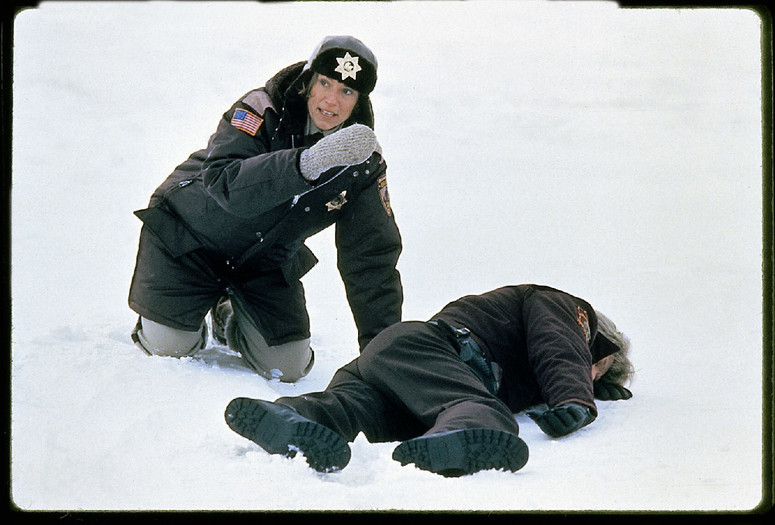
GB - Do you personally mix all your tracks within the sounds that you've designed.
EG - I do pre-mix everything personally. What I mean by that is whenever I'm editing sound effects or backgrounds, I usually do those together and then I get the Foley. So while I'm designing effects or cutting sound effects, I'm putting natural reverb on things, putting them in a space, panning them. All of that's pre-dubbing the elements as I'm cutting. I stock pre-dubbing folly against my backgrounds and my hard effects and come up with a new shape and that'll either be what we mix in the final, or we'll go through another pre-dub process like we did on "Gemini Man." When I work with Doug Hemphill, for two weeks we take all my material that I've sort of sprinkled tonal water on, and then we put it into a real Atmos pre-dub.
We'll actually create objects ahead of time and will kind of decide what we want to make an object when we get there. And that's part of the pre-dub process. To be honest, I really love it when there's an effects mixer there. In New York, that doesn't happen all the time. So I become the effects mixer often. I do feel that a lot of times if I am not the effects mixer, the actual effects mixer can bring it to another level just by me not mothering it to death. It's so collaborative and fun to bounce things off each other when there's another mixer there with you. And other times, it's just me going at my tracks and having the Director tell me what's going on.
GB - How much dialogue is there between you and the mixer? Because you don't want to mix it down to a point where the mixer can't undo anything with it, right?
EG - That's absolutely, positively correct. I don't know how many other guys work this way, but I would say I'm 100% virtual. There's nothing there that can't be unraveled, in the sense that my pre-dubs are all EQs, virtual reverbs and in fact, I've had mixers say, "you don't have to do that! If your door has four elements, and it's the right sound for the room, just give me a stereo pair or LCR." I do keep everything virtual, I don't know why, I guess I've just been doing it that way for so long.
GB - How did you get into the field?
EG - I graduated with an audio engineering degree from Berklee College of Music. I went around to studios to look for a gig as an engineer. That wasn't going to happen for music for me. My sister's boyfriend looked in this film book in New York called the "yellow book." It's a directory for filmmakers to gain access to facilities and equipment. He tells me, "you should go over and check out this place Reeves. It's a big video facility." So Idid and I started in the mailroom eventually becoming a messenger. They had one of the first computers in the world for sound and I just, latched on to it. It was like the coolest thing I ever saw. I got lucky.
GB - When computers entered into the field, did you immediately jump onto Pro Tools? Or was there another software that you used?
EG - It definitely wasn't Pro Tools in the beginning for me. I came late to Pro Tools kicking and screaming! In the early version of Pro Tools you didn't even have stereo to group mono elements and it was just not really well thought out initially. It's fantastic now and they've done a fantastic job in developing it.
The computer I started on was the first of its kind, it was retrieving eight bit mono files from hard disk. This is before Winchester technology, before the idea of a hard drive really. This would have been 1982. I got really hooked on a New England digital thing called the Synclavier. Sampling became a big thing where you could record onto ram and then you had the ability to process that with pitch and numerous other methods. So the Synclavier became my hammer and chisel. Then we went to Sonic Solutions for a while and then we really loved Audio Vision, which was AVID's approach. That really was the first disk based editing system that made sound part of the editing thing, not just an adjunct.
GB - I loved Audio Vision! I love hearing what software people started with in the 80s and 90s. I have a friend who's an editor and he started on the Montage Editing System. They had a room full of basically just tape decks.
EG - It was crazy! All pf that was because certain things were so expensive. For you to transfer your dailies to LaserDisc back in the day when EditDroid was a concept at LucasFilm, there were only two places in the country that did that. It was very prohibitive financially. So Montage comes along with like, 15 Sony Betamax and has the exact same data on all of them, but they're parked randomly in different locations. I mean, that's just kooky.
GB - What's funny is I was at an event once and I just happened to be seated beside a guy who worked on the EditDroid. I asked him if any of them had survived. He's like, "when we decided to fold everything up, we just tossed them all in the bay in San Francisco." So there's EditDroids just sitting at the bottom of the bay!
EG - Can you imagine? The system I worked on used four 200 megabyte drives and they were layered discs that had sound heads go between the layers. It was Winchester technology, it just wasn't sealed. These were Removable Disk packs, they were enormous. The machine that drove the disk at 3600 rpm was the size of a dishwasher, maybe even bigger. So we had four of those for sound playback in the room, and I could retrieve audio off of that and mix it and change pitch. With VCA I could control EQ and volume and I could do that to pictures. It was really pretty cool in 1982 to be able to mess around with all of that.
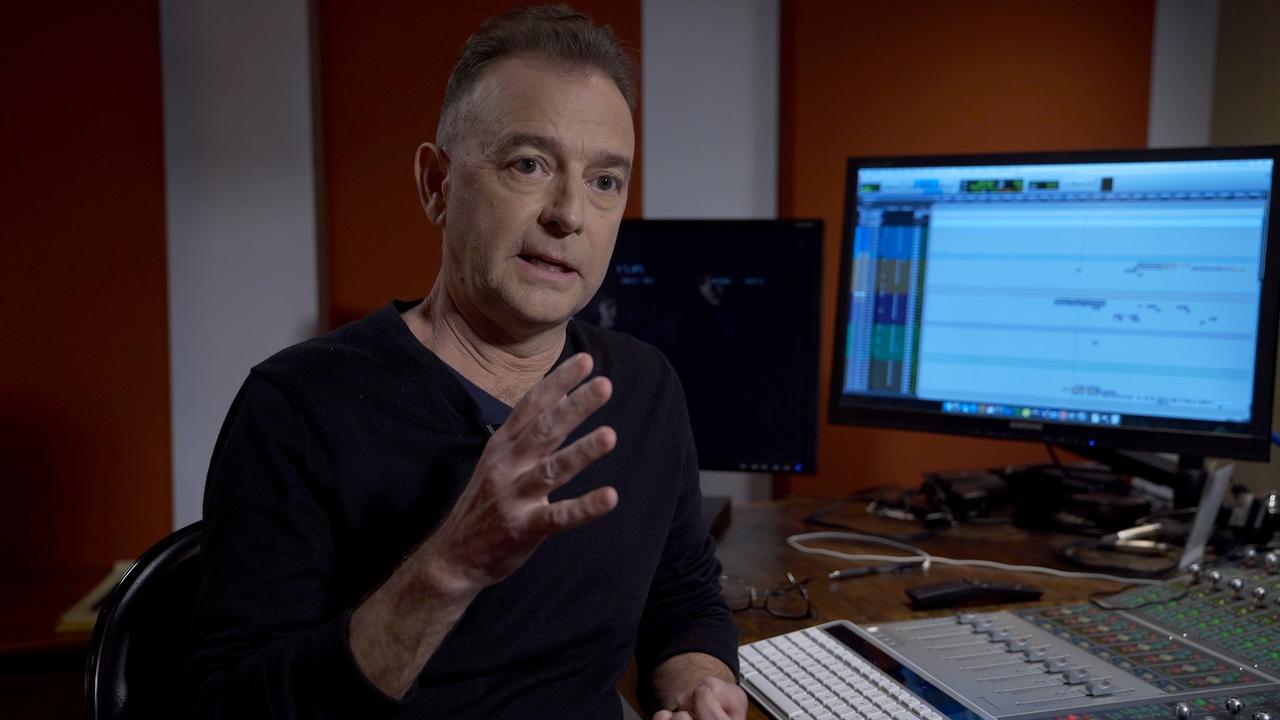
GB - Can you recommend any films that blows you away from its sound work?
EG - From the minimalists I would say "Days of Heaven." With Terrence Malick, I mean the thrasher sound effect and it's use as a motif is just fantastic. As for some of the more complex film sounds from today, there is Mark Mangini's work on "Fury Road." Another great work is "Full Metal Jacket." I love it as a very austere sound track.
"Barton Fink" always comes to mind with the bell and fly... Skip's work on that is so special. Lately I really dug "Baby Driver," those guys did a great job! I'm not entirely sure how they did it, but given the opportunity to cut picture to sound or however it all worked, it had a very good effect on the telling the story. I thought it was wonderful.
GB - Do you prefer to work on something that's big and grandiose? Or do you prefer to work on more subtle things where you can really work with the character of the sounds?
EG - That's a good question. Folks on the East Coast, New Yorkers in general, we don't get really big sound jobs like the Marvel films in LA. I'd rather shy away from those type of films. They are just too much work. In the grand scheme of things, the way sound works in those films is a very big challenge with the amount of music. I like anything where sound plays a role in the character and the overall story. You actually kind of remember it from hearing it later, or seeing it later.
GB - I once talked with Dan Lebental, who was the editor on "Iron Man," and he was saying, they were still getting VFX shots in the mix, which I can't imagine. Not only from an editorial perspective, but also from a sound perspective. Meaning that the visuals could change on you, which in turn could change the entire soundscape.
EG - Oh, yeah, it's awful. We get visual effects updates, right up until the print master. I've told the story before on "Hulk," where there would be an avalanche of rocks tumbling down a mountain, We would follow that and get all the Foley for that and put in sync, and then the visual update would be completely different. That's your worst nightmare. Re-syncing stuff that was very hard to prepare and mix and then having to cut it, move it, and hope it all works. It's a really sad part of the process that visual effects come in so late. I know in the future producers will make budgets on schedules that that will change that because it's so inefficient.
GB - What are your thoughts about combining the Oscar sound categories?
EG - So what they did was combine the two categories from mixing and editing into one category. I was extremely happy about that. I've been a proponent of that component of combining the awards for a very, very long time. It makes sense as a New Yorker and East Coast person to say that. Those disciplines are very much regulated in Hollywood to such great degree, that it made sense for them to be two different things. For a guy like me, I get some sound and I start to mix it together. Now I am editing and mixing at the same time. Lines like that now completely blurred. It's all the soundtrack ultimately and it's hard to differentiate between those disciplines.
GB - I have a fun question which was submitted to us... Why do trailers sound exactly the same?
EG - It's sort of like everything else, their job is to sell that movie and to make it interesting to watch.
GB - You don't get involved in the trailer sound very often, right?
EG - Almost never. The closest we've come is to give them some sound effects. In fact, the directors are usually not even involved. It's a completely separate arm. The director gets some approval and I don't know to what degree The sound is going to be what you would expect, whiz bangs and explosions and cool stuff. I think it's great, but they do tend to follow a formula. I personally wouldn't know how to do a trailer without simply going for that classic line and voice "in a world..." It's gotta be there right?
GB - For a while there, there was a lot of talk about how CDs have no dynamics. Do you find that with trailers or CDs?
EG - That is a technique in rock or various things where they, restrict the dynamic range to get a really nice tight sound that might play really well, on car speakers, or various things. I haven't seen that too much with sound for movies. I don't know if there's any of that effect on say, the DVD market for home theater, but we keep our dynamic range wide open with limiting and compressing. But it's not like where we're now taking that and squashing it down.
GB - Do you have a favorite moment where you experienced sound in the theater? Be that in a film you have worked on or someone else's?
EG - Yeah. "Apocalypse Now" when they jump out when and go to collect the mangoes I mean... just holy smokes! In "Thin Red Line", there was a red laser tracer used on one bullet somewhere in that movie. I remember seeing that in a theater and the effect of that red line coming out of it. I don't know what it was, but that one was pretty cool.
GB - Yeah, in "28 Weeks Later?" there was a moment where the zombies broke out a building and start running at everyone and the soldiers had them all in their infrared night vision. All you could hear was the soldiers trying to figure out who to pick off, but they couldn't tell who was not a zombie. There were no zombie sounds. It was just trying to figure out which ones to shoot. I remember in the theater being blown away by that.
EG - Yeah, yeah! I actually worked on a film where that was part of a training exercise for this special team of assassins. "Assassin USA" or something. I have no idea what happened in that movie, but one of the training sequences was that you don't know who's a terrorist or not. There is a dark room with flashing and you have to make quick decisions on who to kill and and who not to. I'm sure there's others, but the one in "Apocalypse Now" just has always been a natural one to come back to because it just jumps out at you and scares you in a big way.
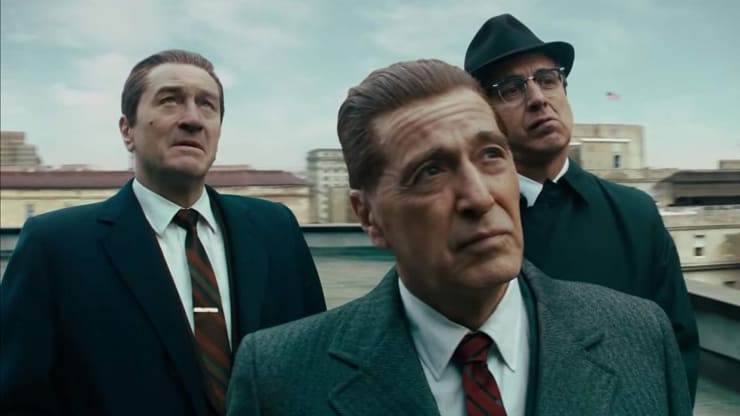
GB - Talking about heavy VFX films, what about "The Irishman"? What was the workflow like with that film due to the heavy use of de-aging effects?
EG - The picture department actually took time off. They had finished a cut and then had to sort of wait for the de-aging process to finish. For me, personally, none of the things I worked on had the de-aging element that affected my sound effects. So the shots I saw of the characters, they might have the dots on them for the the process, but that workflow was very similar to the way that I always work with Marty Scorcese and Thelma Schoonmaker. Which is to say very early on, I get a script. They generally have a shopping list of things they need while they cut to help them make decisions with the picture. They also need them to then screen and have a reasonable temp mix with some sound effects that are really important to emotionally tell the story. And that's how I did that. So I would say all the effects that were really important in the movie that you hear in the final soundtrack were already developed before the sound crew even came on.
GB - Do you ever go to the audience previews of the film to see how they react to the sounds?
EG - Yes! Sometimes they want bodies in there after their previews. And those will be note taking focus group type previews. Sometimes I've been asked, back in the day, you were asked often to go to a preview to see where they'll take notes. Or they wanted me to record or do something where they could hear the audience laughter and know how to re edit the film for pauses or stuff like that. Find where unexpected laughter might have ruined the line of dialogue. So they'll open up a shot, but, you know, I don't think that's what sound guys do anymore. I definitely want to see see what the movie is going to be like, see it on a big screen. Any screening ahead of time is helpful to the process of creating.

GB - What would you say is the film that you've worked on that you're most proud of? If can't choose, maybe give us a couple because we don't want to get you in any trouble!
EG - I mean, obviously "Hugo" was great, because of all the accolades. That was a real, wonderful experience from beginning to end. The sound we had the opportunity to do in the movie, and then the acclaim that came with it was really, really great! Again, I am also extremely proud of the work on "Crouching Tiger" and "Life of Pi." I was kind of disappointed that we weren't recognized as much as I thought we should have been.
GB - I can't remember when you did this, but you did a an event where you did a presentation. I think it was "Sight, Sound and Story" where you showed the original recordings and you said there's a huge amount of ADR in that film.
EG - Absolutely! For instance the boat sinking, that's all wind machines on a set. Pi yelling out all that stuff was all ADR. There was nothing usable whatsoever from his stems. I remember it was the head of the reel, so like at 12 feet on reel three, he hears something off camera and gets up. From 12 foot to, you know, a double reel, 18 minutes later or however long the sequence was, probably like more like eight or 10 minutes, there wasn't a single production sound used. All the wind, all the storm, all the waves, the ADR people yelling, all the animal sounds, that was completely replaced.
GB - Going back to what we talked about earlier with ADR, do you ever use that as an example when a director says they don't want to do ADR?
EG - Yeah, of course. Directors will certainly use ADR. There was a scene in "The Aviator" where Leo's playing Howard Hughes and he's shooting the scenes of the dog fights that he then will eventually go put sound too. And of course, it's all wind machine and Leo's saying some things. Nobody was gonna use that. When it becomes technical like that, when it's that blatant they'll sign on for it.
GB - Have you ever been in a situation on a lower budget production where they couldn't afford ADR and you had to figure out a workaround?
EG - I certainly have worked on films throughout my career that have been so low budget and where money so tight, that they would use alternate takes. For the most part later in my career with the budgets we've been working with, the producers already have a line item built in. They plan on that they are gonna need so much ADR so they put that money in there.
GB - How long do you have for sound work on an average film?
EG - Let's say six weeks from prep to editing. Six weeks or five weeks of editing and designing. And then we'll start the pre process, which is usually a week on a lower budget or two weeks if you're on a bigger budget. Then the mix might run for two or three weeks. It depends on the scope and budget of the project.
It's been a while since I had two weeks to prep for a film, but it's doable depending on the how complex it will be. After that you get maybe a week to mix it. Then there is like three or four days to do the M & E, the premaster and deliverables. "The Irishman" was longer. "Gemini Man," I think I had like 12 weeks to edit. My co-supervisor Phil Stockton would have that number right off the top of his head in terms of average, but I'm kind of just thinking back on the various projects.
GB - You talked about Phil for a second there. What percentage of your time on a project is spent dealing with clients and administrative work? Like hiring people, dealing with budgets, etc, versus creative work such as sound design and cutting sound effects.
EG - Phil Stockton and I share those responsibilities. They're surprisingly finely delineated. Phil definitely starts with a budget. He sends it to me but it's his budget. For the most part, I might tweak a few things for sound effects recording, but he does the hiring. He'll suggest people if I need more effects editors, other than just myself. And then spotting sessions, we'll both go to the spotting sessions. At that point, it's more on me to keep the communication up with the editing department for creative reasons and it's his job to continue a very complex dialogue for booking ADR. He'll go to the ADR sessions. That's probably true of most people I've co-supervised with. They're really, the sound supervisor in more of the official way. It's just one less thing you got to worry about. I know guys do it all by themselves. I think those guys are incredible.
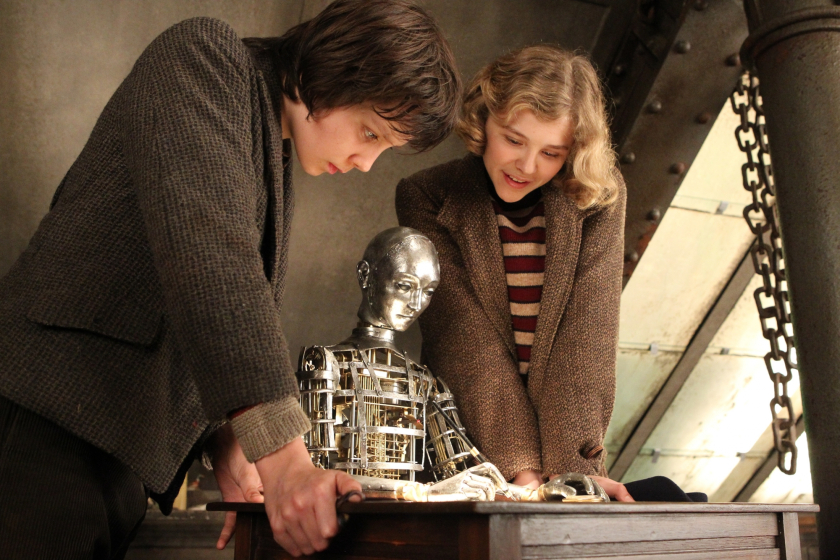
GB - I always like to ask some kind of fun question to wrap things up. What's your favorite guilty pleasure film to watch?
EG - Oh, we just watched it. "My Cousin Vinny"! Marisa Tomei is amazing, as is Joe Pesci. That's a guilty pleasure because I think a lot of people think that's lowbrow filmmaking. It's my go to fun film for sure.
GB - I actually have one more question actually. What would you say people would get from your course on Filmmaker U that we produced together?
EG - I definitely think it's worth the 99 bucks! If I had that information when I was starting out, I think I would have changed how I went about developing some ideas. It's so worth it to hear how major motion pictures develop their sound process. I definitely think that people would appreciate it on that level. It's not very tutorial heavy. It's not a course that's going to show you what buttons to press, but it will definitely give years of insight into the stories, processes and techniques that I have acquired over decades of work.
GB - Thanks so much!
EG - Cheers. Thanks!

